What's New
Displaying results 3381 - 3390 of 4052
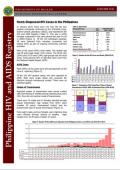
Resource | Fact Sheets,
In January 2010, there were 143 new HIV Ab seropositive individuals confirmed by the STD/AIDS Cooperative Central Laboratory (SACCL) and reported to the HIV and AIDS Registry (Table 1). This was a 120% increase compared to the same period last year (n=65 in 2009) [Figure 1]. Of the 143 individuals reported, 58 were detected from voluntary counseling and testing (VCT) as part of ongoing community outreach activities.
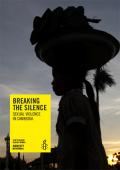
Resource | Publications,
Amnesty International has prepared this report with the aim of supporting the work of Cambodian women's rights organizations, service providers and others working to protect and defend women and girls who are subjected to rape and other sexual violence. The report is part of Amnesty International's global campaign “Stop Violence Against Women”. It is based on research trips to Cambodia in April and November-December 2009, and draws on interviews in Battambang, Siem Reap, Phnom Penh and Kampong Thom with some 30 female victims of rape from across ten provinces, and around a dozen of their family members. The violations described in the report took place between early 2006 and December 2009.
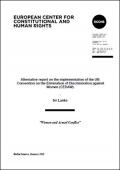
Resource | Guidelines,
Gender-based violence against women has gained recognition under International law, in the jurisdictions of international courts and tribunals, in the Convention on the Elimination of Discrimination against Women (CEDAW) itself and under the Security Council's effort to broaden their approaches to peace and security. But an intertwined approach is still lacking and a concerted and coherent response from the UN system is needed.
All governments and legal authorities which fail to protect women and to discipline those found responsible for gender-based crimes are guilty of indemnity. Addressing this impunity raises the question of sexual violence, gender discrimination and patriarchal structures.
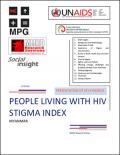
Resource | Publications,
For gender comparison, of the stigma index data, the MPG numerators divided their sample allocation evenly by gender of respondents currently living with HIV. The final sample for tabulations is divided with fifty‐one percent female respondents and forty‐nine percent male respondents, respectively 166 and 158 persons that make the sample size amount to a total of 324 respondents. For the purpose of this HIV stigma index, all respondents have a status of HIV positive.
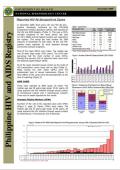
Resource | Fact Sheets,
In December 2009, there were 126 new HIV Ab seropositive individuals confirmed by the STD/AIDS Cooperative Central Laboratory (SACCL) and reported to the HIV and AIDS Registry (Table 1). This was a 232% increase compared to the same period last year (n=38 in 2008) and the highest number ever reported in the registry. This brings the total number for 2009 (January to December) to 835 cases. Of the 126 HIV positive cases reported, 52 were detected through community outreach programs.

Resource | Presentations,
Background on peer education outreach interventions supported by PEPFAR/USAID/FHI:
- The expanded array of interventions offered for drug users
- Peer education outreach
- DIC based services
- Needles exchanges
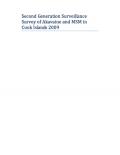
Resource | Publications,
The Cook Islands is a very small Pacific island country, both in terms of geography and population. HIV is practically unknown in the Cook Islands, with only two cases of HIV infection ever reported and no residents currently living with HIV. However, previous Second Generation Surveillance (SGS) surveys have documented high rates of STI infection, especially Chlamydia, among antenatal women and youth in 2006. In 2008 young people under 24 years reported high levels of risky sexual behavior, including multiple and concurrent partners and low levels of condom use.
This report documents the findings from a Second Generation Behavioral Surveillance Survey (BSS) which was conducted among akavaine and men who have sex with men (MSM) in the Cook Islands in 2009.
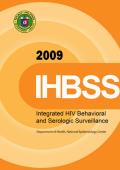
Resource | Fact Sheets,
Compilation of the data on the Integrated HIV Behavioral and Serologic Surveillance among the most-at-risk populations (MARP) from 2005-2009:
- Female Sex Workers (FSW)
- Youth Female Sex Workers
- Male who have Sex with Males (MSM)
- Youth Male who have Sex with Males
- Injecting Drug Users (IDU)
- Youth Injecting Drug Users
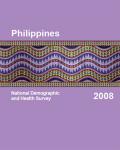
Resource | Publications,
The 2008 National Demographic and Health Survey (2008 NDHS) is a nationally representative survey of 13,594 women age 15-49 from 12,469 households successfully interviewed, covering 794 enumeration areas (clusters) throughout the Philippines. This survey is the ninth in a series of demographic and health surveys conducted to assess the demographic and health situation in the country.
The survey obtained detailed information on fertility levels, marriage, fertility preferences, awareness and use of family planning methods, breastfeeding practices, nutritional status of women and young children, childhood mortality, maternal and child health, and knowledge and attitudes regarding HIV/AIDS and tuberculosis. Also, for the first time, the Philippines NDHS gathered information on violence against women.
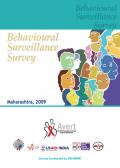
Resource | Publications,
Behavioral Surveillance Survey (BSS) provides information on behaviors among subpopulations who may be difficult to reach through traditional household surveys, but who may be at high risk of contracting or transmitting the virus.
This was the first round of BSS for the Maharashtra State and would serve as the baseline. Nine various groups were covered under the survey; four core group categories (brothel and non-brothel based female sex workers, men having sex with men, injecting drug users), three bridge groups (clients of female sex workers, truckers and helpers and single male migrants) and general population groups.





